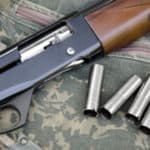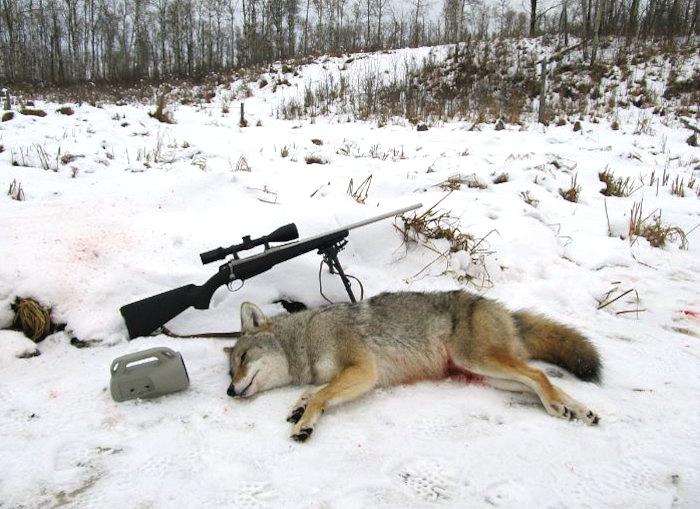Among predator hunters, the coyote has become the top “dog” and most popular predator species hunted. In fact, an entire hunting market has developed that includes dedicated coyote hunting guns (shotguns and rifles), calls, clothing, scents, etc. Coyote hunters are just like any other group of hunters and love to discuss and debate the popular predator hunting calibers. However, if you want to see some passionate discussion about coyote hunting calibers, head over to a predator hunting forum and start a discussion about using a 17 HMR to hunt coyotes. It won’t take you long to determine that 17 HMR coyote hunting is a hotly debated topic.

And, since I’m an avid coyote hunter, I decided to add my two cents worth of opinion (and some would argue that my opinion isn’t even worth .02 cents) to the topic.
17 HMR Cartridge Data
Let’s start by looking at the .17 HMR caliber and the associated ballistic data.
The 17 HMR is a rimfire caliber first introduced by Hornady ammunition in 2002 and was officially called the 17 Hornady Magnum Rimfire. The HMR portion of the name is an acronym of the Hornady Magnum Rimfire name. The cartridge was designed as a potential rimfire replacement to the defunct Remington 5mm cartridge, which had great potential, but never really caught one.
The HMR is built on a 22 Magnum case mated to a 17 caliber bullet. I always found the look of the HMR round itself to resemble a miniature 270 Winchester cartridge. Initially, Hornady only offered the 17 caliber in a polymer-tipped bullet, but there are several other bullet options and bullet weights on the market today.
The 17 HMR has a muzzle velocity between 2600 to 2800 feet per second (FPS) and is a very flat shooting round. Ballistically speaking, a 17 HMR sighted in for 100 yards drops less than 3 inches at 150 yards and drops less than 9 inches at 200 yards.
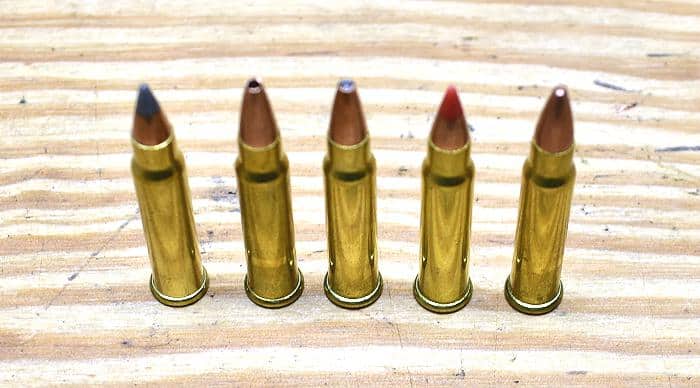
Coyote Hunting with a 17 HMR
If you are considering the 17 HMR as a yote hunting round, there are several factors to take into consideration, including the following:
Bullet Type and Weight
Today the HMR caliber is available in several different bullet weights and configurations beyond the original 17-grain polymer tipped rounds.
Currently, 17 HMR ammunition is sold in the following bullet weights:
- 15.5 grains (which is only available in a lead-free version)
- 17 grains (the most common bullet size)
- 20 grain (the largest bullet option currently on the market)
From a bullet type standpoint, this Hornady caliber is available in the following configurations:
- Polymer tipped
- Jacketed hollow points (JHP)
- Full metal jacket (FMJ)
If you were planning to use a 17 HMR for coyotes, I’d completely rule the 15.5 grain rounds out. Having used them for hunting other small game, they are too small and don’t pack enough punch for a coyote. The 17gr and 20gr heavier bullets are a better option for yotes.
As far as bullet types are concerned, I prefer the jacked hollow points first, followed by the full metal jacket rounds, and then the polymer tipped rounds (like the Hornady v-max) last. Typically, I don’t recommend an FMJ round for game, but the FMJ 17 bullets penetrate better than the polymer tipped rounds, in my experience.
On the few occasions that I hunted coyotes with a 17HMR, my preferred round is the Hornady XTP 20-grain HP.
Terminal Ballistics
Let me start by saying that I’m using the “terminal ballistics” phrase loosely as it’s the best way to describe the point I’m trying to make. Also, I understand that many other factors above and beyond ballistic performance play a significant role in the killing power of a caliber. For example, shot placement, bullet configuration, penetration, bullet performance, etc., all play a part in determining the actual effectiveness of a caliber on a game species.
However, for the purposes of this post dealing with the 17 HMR ballistics and the ethical harvest of coyotes, let’s talk foot-pounds of energy on impact.
One potential method to measure a caliber’s effectiveness against an animal is to look at the terminal ballistics. A general rule of thumb with impact energy suggests that a bullet should transfer 10 to 12-foot pounds of energy per body weight of the game species. But, again, this is not an exact science but merely an exercise to make a point.
According to Wikipedia, the average male coyote weighs between 18 and 44 pounds, while the average female weighs between 15 and 40 pounds. So, for easy math, let’s say that the average male coyote’s weight is 31 pounds (18 +44/2), and the average female coyote’s weight is 27.5 pounds (15 + 40/2). Using the 31-pound male and 27.5 female figures, the average coyote weight is 29.25 pounds, so let’s round it down to 29 pounds for more straightforward math.
Applying the 10-12 foot-pounds of energy per pound of game formula to a 29-pound coyote indicates a caliber should exert a minimum of 290 to 348 foot-pounds of impact on a coyote for effective terminal velocity. Most ballistic charts indicate that the 17 HMR hits with a maximum of 215 to 220 foot-pounds of energy at 25 yards.
Those numbers don’t paint a rosy picture of the HMR being a very good choice for coyotes. That being said, coyotes are routinely harvested with the HMR, so take those numbers with a grain of salt. I’ve taken a few myself with a 17 HMR, but I’ll get more into that below.
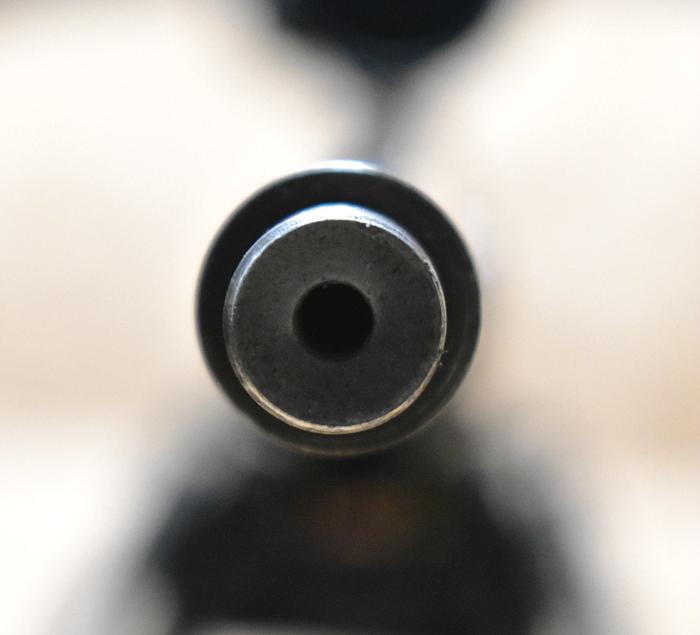
Distance to target
Another factor for consideration with the Hornady Magnum Rimfire is the distance to the target. While the HMR can effectively hit targets in the 150 to 200-yard range, it loses quite a bit of power at those distances. For example, at 150 yards, a 17 averages between 80 and 100 foot-pounds of energy, and at 200 yards, that number drops to 55 to 75 foot-pounds.
For this reason, the HMR is better suited to closer shots on yotes in the 50 yards to 75-yards range. You could probably extend the effective range out to 100 yards under the right conditions with the right bullet. Anything over 100 yards won’t have enough juice left for a consistent and ethical killing shot.
Hunting Regulations
It’s also important to check the coyote hunting rules and regulations for any area where you’ll be hunting. I say this as some states may have restrictions that prevent using a 17 HMR for taking coyotes.
Some states have shotgun-only restrictions, while I’ve also seen some states that have a centerfire-only rule for coyotes.
Ethical Position
The last point to make with this topic is one of hunting ethics since the HMR isn’t considered an ideal cartridge for hunting yotes and is a bit underpowered. I’ve always operated under the premise that I try to treat every game species (even varmints and pests) humanely and strive for a one-shot kill where possible.
Ethically speaking, you have to decide if the HMR is enough gun to ethically and humanely harvest a coyote.
Should I Hunt Coyotes with a 17 HMR?
Although I have harvested a few coyotes with the HMR, I would say that the caliber is on the very edge of having sufficient power to harvest a coyote, but not a good caliber for the job.
I’ve taken three coyotes so far with an HMR while coyote hunting. Two of three were one-shot kills at close range (one at 20 yards and one at 40 yards). The third was shot at 80 yards and required a follow-up shot to put it down. All three were harvested during the legal season and at the request of the respective landowners who had lost chickens and outdoor pets to the yotes.
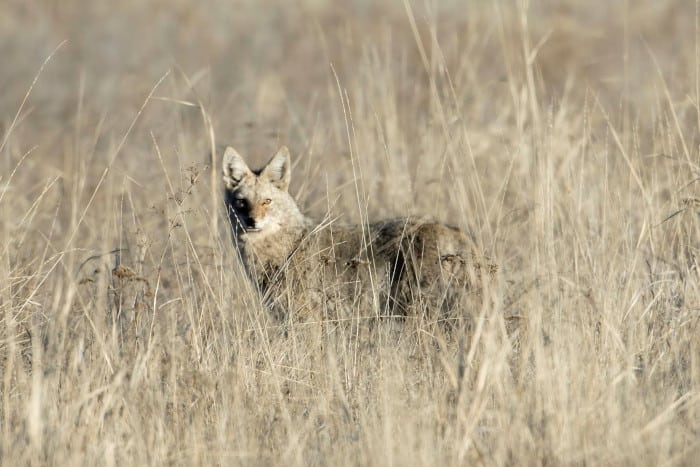
My advice would be this: The HMR is a great little varmint cartridge that is amazingly accurate. It excels at small varmint species like prairie dogs, groundhogs, ground squirrels, and foxes. However, it beings to lose its effectiveness on game species larger than a fox, and there are far better rimfire and centerfire coyote calibers on the market. If a hunter was adamant about using a rimfire caliber for yotes, I’d consider the 22 mag (also called a 22 WMR) or 17 WSM a better coyote round over the 17 HMR.
If you are determined to use the HMR for yotes, I’d make the following suggestions:
- Shoot a 20 grain jacketed hollow point round.
- Keep the shooting distance within 100 yards (although 75 yards or less is probably a better option).
- Shot placement is critical, so make the shot count.
To sum up, I’m not saying that the HMR is a “bad” caliber for coyotes; it’s just not a good coyote round for consistent and ethical one-shot kills.
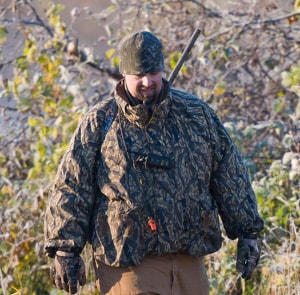
Ben was born and raised in the great state of Texas and comes from a long line of outdoorsmen. He grew up hunting nearly every game species that Texas had to offer, including wild pigs, White-tailed deer, and coyotes. While Ben is equally comfortable hunting almost any game species, his primary focus today is predator hunting and turkey hunting. He is also a long-range shooter and enjoys harvesting coyotes at longer than average distances. Ben started working in outdoor and sporting goods while in high school and now has 17 years of experience in the hunting industry, including some time as a part-time hunting guide. Ben is married with three boys, who are continuing the family hunting traditions.

